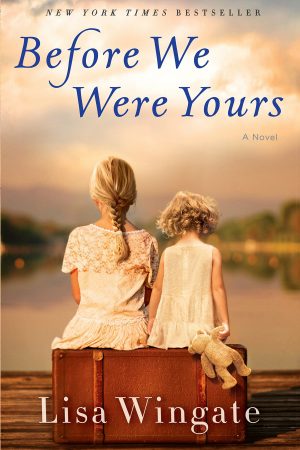
From the authors website:
THE BLOCKBUSTER HIT—A #1 New York Times, USA Today, Wall Street Journal, and Publishers Weekly Bestseller
Memphis, 1939. Twelve-year-old Rill Foss and her four younger siblings live a magical life aboard their family’s Mississippi River shantyboat. But when their father must rush their mother to the hospital one stormy night, Rill is left in charge—until strangers arrive in force. Wrenched from all that is familiar and thrown into a Tennessee Children’s Home Society orphanage, the Foss children are assured that they will soon be returned to their parents—but they quickly realize the dark truth. At the mercy of the facility’s cruel director, Rill fights to keep her sisters and brother together in a world of danger and uncertainty.
Aiken, South Carolina, present day. Born into wealth and privilege, Avery Stafford seems to have it all: a successful career as a federal prosecutor, a handsome fiancé, and a lavish wedding on the horizon. But when Avery returns home to help her father weather a health crisis, a chance encounter leaves her with uncomfortable questions and compels her to take a journey through her family’s long-hidden history, on a path that will ultimately lead either to devastation or to redemption.
Based on one of America’s most notorious real-life scandals—in which Georgia Tann, director of a Memphis-based adoption organization, kidnapped and sold poor children to wealthy families all over the country—Lisa Wingate’s riveting, wrenching, and ultimately uplifting tale reminds us how, even though the paths we take can lead to many places, the heart never forgets where we belong.
My thoughts:
This family really tugged at my heart and made me wonder if this was based on real events. This family is fictional, but the Tennessee Children's Home Society was real and really did procure children through all sorts of methods to adopt out for a fee. Some were kidnapped, some coerced from poor families, some taken when parents signed papers they didn't understand.
I like how the story unfolded, while part of me just wanted them to spill who was who and what had happened to them, it unfolded in just the fight way.
What kind of mark does it leave on children to be treated as they were in that home and to wonder for years what had happened to siblings? Why did they feel the need to hide the truth from even their families? Did the stigma still linger?
This book and this family were so real I wanted to find out more about the real survivors of the TCHS.


